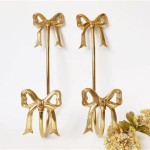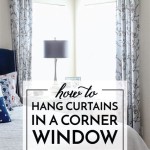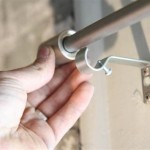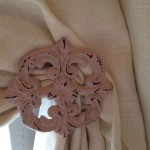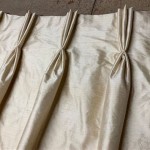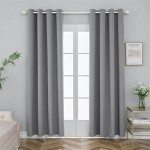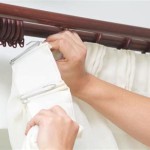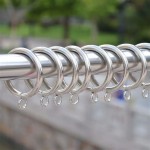Types of Valances For Curtains: A Comprehensive Guide
Valances are a decorative window treatment utilized to conceal curtain hardware and add aesthetic appeal to a room. Positioned at the top of the window, they can soften harsh lines, introduce color and pattern, and complement existing décor. Understanding the different types of valances available can significantly enhance a room's overall design.
Selecting the appropriate valance depends on several factors, including the room's style, the type of curtains used, the window size, and personal preference. A poorly chosen valance can clash with existing décor or appear disproportionate to the window. Therefore, careful consideration is crucial to achieve a harmonious and visually pleasing result.
Key Considerations When Choosing a Valance
Before exploring specific valance types, it is essential to outline the key factors influencing the selection process:
Room Style: The valance should align with the room's overall aesthetic. For instance, a formal dining room might benefit from a tailored valance, while a casual living room could accommodate a more relaxed, gathered style.
Curtain Type: The valance must complement the curtains. Heavy, elaborate curtains may require a substantial valance, whereas lighter curtains might pair better with a simpler design.
Window Size and Shape: The valance's dimensions should be proportionate to the window. A small window can be overwhelmed by a large, ornate valance, while a large window might require a longer or more elaborate design.
Fabric: The fabric choice significantly impacts the valance's appearance and durability. Consider the fabric's texture, weight, and color, ensuring it complements the curtains and the room's décor.
Mounting Style: The mounting style affects the valance's appearance and ease of installation. Options include rod pocket, board-mounted, and clip-on styles, each offering distinct advantages.
Maintenance: Consider the ease of cleaning and maintenance. Some valances may require dry cleaning, while others can be easily spot-cleaned or machine-washed.
Common Types of Valances
The market offers a diverse range of valance styles, each with unique characteristics. Understanding these styles will aid in selecting the most suitable option for a given space.
Rod Pocket Valances: These are one of the most common and versatile types of valances. Featuring a sewn-in pocket at the top, they easily slide onto a curtain rod. Rod pocket valances are available in various styles, from simple and tailored to more elaborate and gathered. They are relatively easy to install and offer a clean, finished look.
Scarf Valances: Scarf valances are characterized by a long, flowing piece of fabric draped over a rod or decorative hardware. They offer a soft and romantic aesthetic, adding a touch of elegance to a room. The fabric can be arranged in various ways, creating different draping effects. Scarf valances are particularly suitable for rooms with high ceilings, as they can visually soften the space.
Swag Valances: Swag valances consist of fabric draped in a series of curves or swags, creating a cascading effect. They are often used in formal settings, adding a touch of sophistication and drama. Swag valances can be constructed from a single piece of fabric or multiple pieces, depending on the desired effect. They require careful draping and are often more challenging to install than other valance types.
Gathered Valances: Gathered valances are created by gathering fabric along the top edge, creating a soft and textured appearance. They are often used in casual or country-style rooms, adding a touch of warmth and charm. Gathered valances are typically made with lightweight fabrics, such as cotton or linen, to enhance the gathered effect. They can be easily customized to fit different window sizes and styles.
Pleated Valances: Pleated valances feature neat, uniform pleats that create a tailored and structured look. They are often used in formal or contemporary settings, adding a touch of sophistication and elegance. Pleated valances can be constructed with various types of pleats, such as box pleats, inverted pleats, or cartridge pleats, each offering a distinct aesthetic. They require precise measuring and sewing to achieve a professional finish.
Balloon Valances: Balloon valances are characterized by their poufy, rounded shape, resembling a balloon. They are created by gathering fabric at specific points, creating a series of soft, rounded folds. Balloon valances are often used in bedrooms or nurseries, adding a touch of whimsy and charm. They are typically made with lightweight fabrics, such as silk or taffeta, to enhance the balloon effect. They can be customized to fit different window sizes and styles.
Austrian Valances: Austrian valances are similar to balloon valances but feature vertical shirring, creating a more gathered and ruffled appearance. They are often used in formal or romantic settings, adding a touch of elegance and drama. Austrian valances are typically made with luxurious fabrics, such as silk or velvet, to enhance the ruffles. They require careful shirring and are often more challenging to install than other valance types.
Cornice Valances: Cornice valances are hard-sided window treatments made from wood, foam core, or other rigid materials. They create a tailored and structured look, adding a touch of formality to a room. Cornice valances can be painted, stained, or covered with fabric to match the room's décor. They are typically mounted above the window, concealing the curtain hardware and adding a clean, finished look. They are best placed in formal settings such as dining rooms.
Lambrequin Valances: Lambrequin valances are similar to cornice valances but extend down the sides of the window frame, creating a more substantial and decorative effect. They can be made from wood, foam core, or other rigid materials and can be painted, stained, or covered with fabric. Lambrequin valances are often used in formal or traditional settings, adding a touch of grandeur and elegance. They require careful measuring and installation to ensure a proper fit.
Flat Valances: Flat valances are simple, ungathered pieces of fabric that hang straight across the top of the window. They are often used in contemporary or minimalist settings, adding a clean and understated look. Flat valances can be made from various fabrics, depending on the desired effect. They are relatively easy to install and offer a versatile option for different window sizes and styles.
Materials and Construction
The construction and choice of materials are critical aspects of valance design. Fabrics range from lightweight cottons and linens to luxurious silks and velvets. Considerations should be given to durability, cleaning requirements, and the overall aesthetic desired.
Fabric Choice: The fabric's weight affects how the valance drapes and holds its shape. Heavier fabrics, such as velvet or brocade, offer a more structured and formal appearance, while lighter fabrics, such as voile or chiffon, create a softer and more flowing effect.
Lining: Lining the valance adds body, prevents fading, and provides a more polished look. Lining fabrics can be chosen to match the valance fabric or to provide additional light control.
Interlining: Interlining is a layer of fabric placed between the valance fabric and the lining. It provides additional insulation, sound absorption, and enhances the valance's fullness and drape.
Hardware: The choice of hardware, such as rods, brackets, and decorative embellishments, significantly impacts the valance's appearance. Consider the hardware's style, finish, and durability, ensuring it complements the valance fabric and the room's décor.
Trims and Embellishments: Trims and embellishments, such as tassels, fringes, and beads, can add a touch of personality and detail to the valance. Choose trims that complement the valance fabric and the room's style.
Installation Considerations
Proper installation is essential for ensuring the valance hangs correctly and achieves the desired effect. The installation method depends on the valance type and the window's construction.
Rod Pocket Valances: These are typically installed by sliding the valance onto a curtain rod, which is then mounted above the window. Ensure the rod is securely mounted and level before hanging the valance.
Board-Mounted Valances: These are attached to a wooden board, which is then mounted above the window. The board can be attached to the wall using brackets or screws. Ensure the board is securely mounted and level before attaching the valance.
Clip-On Valances: These are attached to the top of the window frame using clips. Clip-on valances are easy to install and remove but may not be suitable for heavier fabrics or larger windows.
Professional Installation: For complex or custom-designed valances, consider hiring a professional installer. A professional installer can ensure the valance is properly measured, constructed, and installed, resulting in a flawless finish.
Valance Styles for Different Rooms
The appropriate valance style can vary depending on the room's function and décor.
Living Room: In a living room, consider valances that complement the curtains and the overall style of the room. Options include rod pocket valances, swag valances, or pleated valances.
Bedroom: In a bedroom, consider valances that create a relaxing and comfortable atmosphere. Options include balloon valances, Austrian valances, or gathered valances.
Dining Room: In a dining room, consider valances that add a touch of formality and elegance. Options include cornice valances, lambrequin valances, or pleated valances.
Kitchen: In a kitchen, consider valances that are easy to clean and maintain. Options include flat valances, rod pocket valances, or simple gathered valances.
Bathroom: In a bathroom, consider valances that are moisture-resistant and easy to clean. Options include vinyl valances or fabric valances treated with a moisture-resistant finish.
Maintaining Valances
Proper maintenance is crucial for prolonging the life and appearance of valances.
Dusting: Regularly dust valances with a soft brush or vacuum cleaner attachment to remove dust and debris.
Spot Cleaning: Spot clean stains with a mild detergent and water. Avoid using harsh chemicals or abrasive cleaners.
Dry Cleaning: Some valances may require dry cleaning, especially those made from delicate fabrics. Follow the manufacturer's instructions for cleaning.
Professional Cleaning: For heavily soiled or stained valances, consider hiring a professional cleaning service.
Conclusion
Selecting the right valance involves considering the room's style, curtain type, window size, fabric, mounting style, and maintenance requirements. By understanding the various types of valances available and their unique characteristics, individuals can enhance the aesthetic appeal of any room with a well-chosen window treatment. With proper maintenance, valances can remain a beautiful and functional addition to a home for years to come.

Window Valance Ideas Treatment Blindsgalore

21 Diffe Styles Of Valances Explained By A Workroom

Window Swags And Valance Styles Offered By Cj Interiors

170 Valance Styles Ideas In 2025 Window Treatments Coverings

Curtain Pelmet Vs Valance Frinton Frames

What Is The Difference Between A Cornice And Valance Blindsgalore Blog

21 Diffe Styles Of Valances Explained By A Workroom

Window Curtains Valance Ideas Diffe Types Of Swag Styles Youtube

Valances For Large Windows Designer Picks Photos

21 Diffe Styles Of Valances Explained By A Workroom

